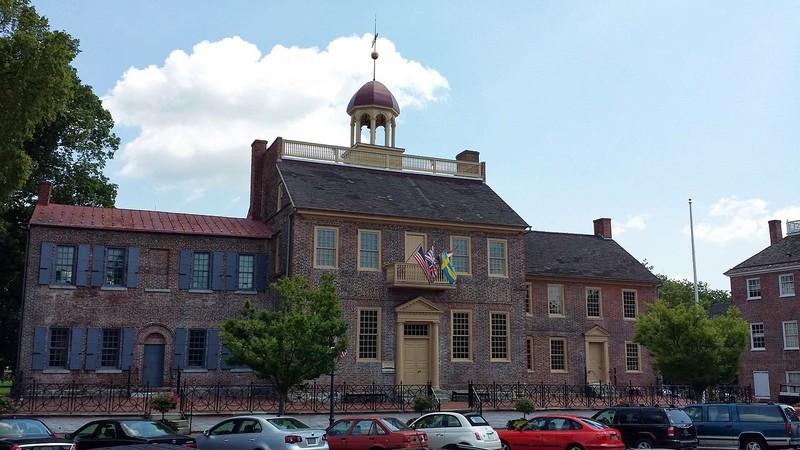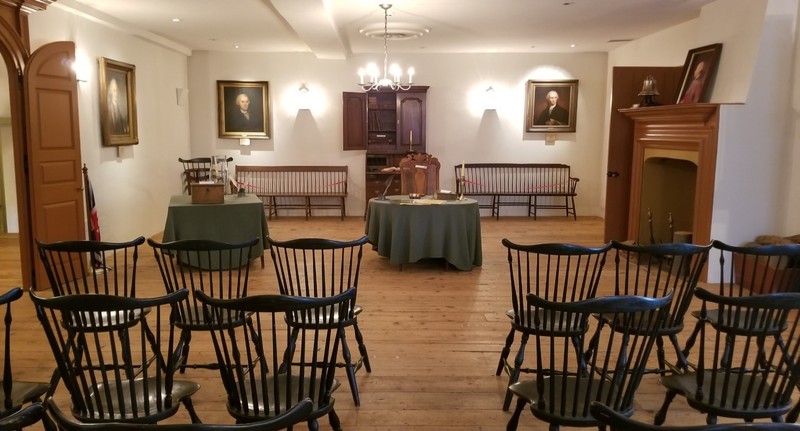New Castle Court House Museum
Introduction
Text-to-speech Audio
Images
The New Castle Court House one of the oldest active state courthouses in the country.

Assembly Room

Court Room

Backstory and Context
Text-to-speech Audio
The town of New Castle has been occupied by the Swedish, Dutch and English which shaped both the community and law. There was originally a court house built on the site of the current building in the 1680's however, being a small wooden building, it unfortunately burned (the foundation of which you can still see today). The need for a new building arose and in 1732, the main center portion was built. The bottom floor houses the court room while the upper floor allowed for the General Assembly to meet. It was in that room on June 15, 1776, that Delaware was born. In late July of 1776, the Declaration of Independence was read to the citizens of New Castle for the first time from the balcony.
The wings were added on in later years allowing for the expansion of office space and small court meeting rooms. The west wing was designed slightly different from the rest of the building in that it was designed to be fireproof. You notice this from the outside of the building with the solid metal door and metal shutters.
The court room has seen several high profile cases tried such as the French Treasury Robbery and the 1848 Supreme Court trial involving noted Wilmington abolitionist Thomas Garrett and Dover abolitionist John Hunn. The trial was judged by Chief Justice Roger Tawny and both men were found guilty of aiding the Hawkins Family to freedom, which in turn meant that the two men had stolen property from their owners.
Throughout its history, the court house has operated in different capacities such as the mayors office, police station, small shops and a tea room which hosted several celebrities such as Norman Rockwell, Kathryn Hepburn and Shirley Temple.
Today, the building is owned and operated by the State of Delaware's Division of Historical and Cultural Affairs. The building is also one site within the First State National Historic Park operated by the National Park System.
Current exhibits in the museum include a small sample of art done by sculptor Charles Parks, "Three Forts: One Community" which details the different European influences the town encountered throughout its history, and "The Path to Freedom: A History of the African American Community in Delaware" which dives into the rich history of the African American community in Delaware and highlights trailblazers who were born or lived in Delaware.
We offer free group tours, school/youth programming, and satisfy several Boy Scout Merit badges. We do also host small weddings for a small fee. Call us to book a time today!
Sources
Bodo, Robin et. al. "New Castle Court House Museum." National Park Service - National Register of Historic Places Nomination Form. November 28, 1972. https://npgallery.nps.gov/GetAsset/d030907a-75d7-4b9f-98e6-4db7761e6f37.
"New Castle Court House." Delaware Division of Historical and Cultural Affairs. Accessed June 29, 2018. https://history.delaware.gov/museums/ncch/ncch_history.shtml.
Photo: Wikimedia Commons
